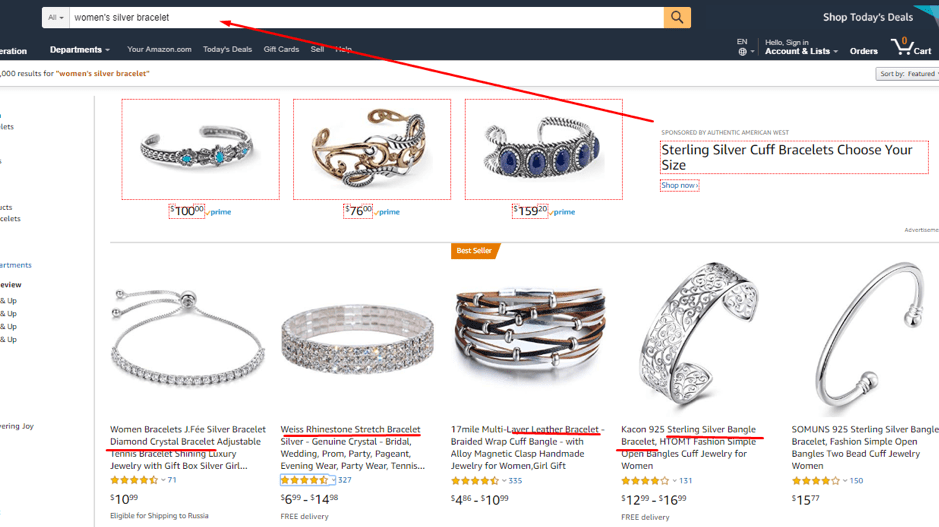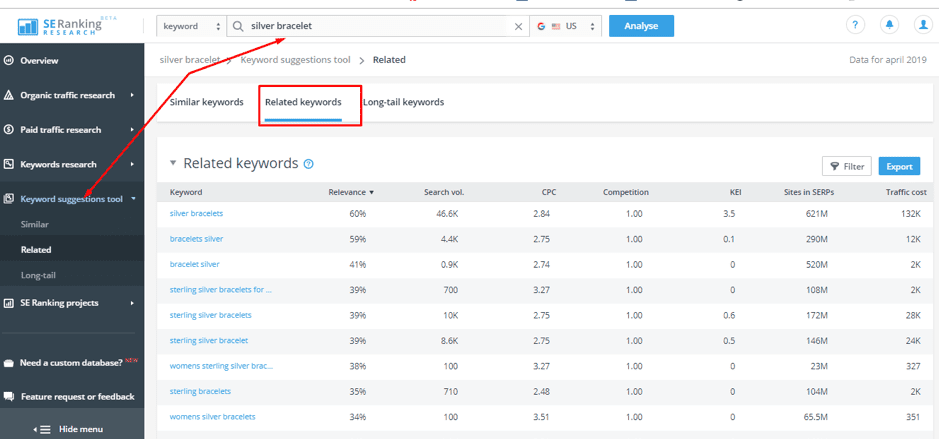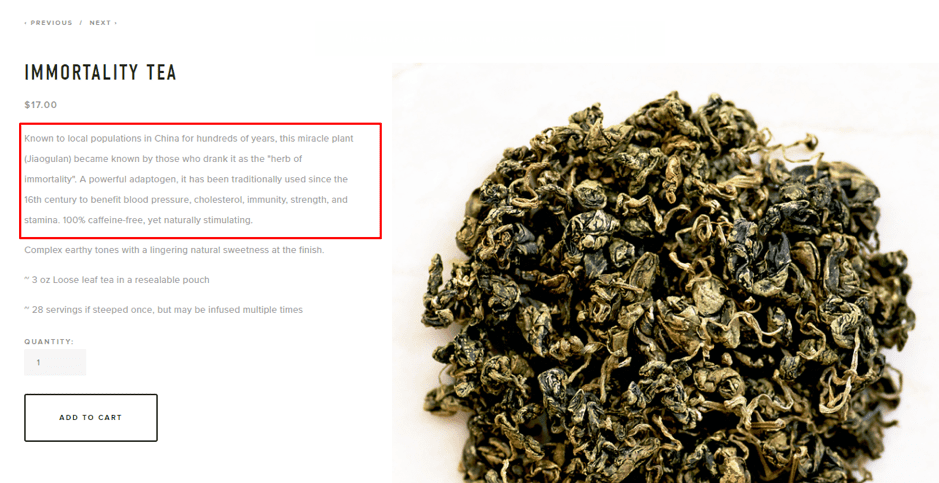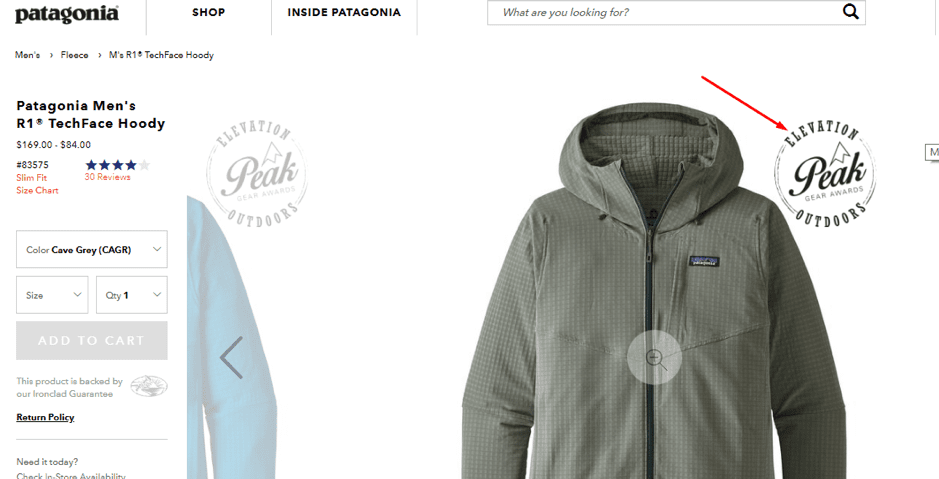There are two types of product descriptions: those that tell and those that sell
Words have huge power to turn even the most ordinary product into a must-have. There are two types of product descriptions: those that tell and those that sell. Most e-commerce businesses simply tell their customers about products, instead of turning them into a revenue-generating buyer.
According to research, 20% of online shopping fails as a result of missing or vague product information. Some 87% of customers rate the inclusion of product content as critical when making the buying decision. Beyond dispute, product descriptions have a huge impact on your sales. They should give consumers the information they need. They should be short, clear and to the point.
The importance of creating product descriptions
Product descriptions are just like an in-store sales assistant. They are your around-the-clock sales staff. They help you increase the customer experience by providing enough information about your products and compel people to purchase the product immediately.
On top of this, writing optimized product descriptions will enhance your chances of getting high rankings on Google. Without them, your product page will probably stand little chance of success. You can optimize your images for keywords, but it is not enough due t the lack of other content.
Once potential customers start browsing through your products, they may get some questions. How does your product solve customers’ problems or improve their life? What do they get from using your product? What differentiates your product from competitors on the market?
You should answer these questions in your descriptions. The best product description will not only persuade consumers that they want to buy your product but that they can’t live without it and need it right away. It is an excellent chance to show people why your business is the best and why they should buy your product.
Now it is time to learn how to write killer product descriptions and give your customers all of the details they need.
Optimize your product descriptions
Your words are important for both real people and SEO. According to research, including relevant keywords into your product descriptions (especially in bullet points) can improve search engine rankings. For good measure, keywords should be naturally used in your copy as this makes it easier for customers to find products online with a Google search.

Together with best SEO practices, Shopify recommends using your keywords in your meta descriptions, page titles, ALT tags, and product descriptions. SE Ranking Keyword Suggestions helps you get a better idea of what keywords you should use for your products quickly so you can centre your product copy around the right words and questions.

To add important keywords to your product descriptions, you can use this format:
Your main product description should be around 70 words minimum and contain:
- Name of a product
- Type of a product (chain bracelet, locket bracelets)
- Product material (silver, copper plated platinum, gold)
Provide at least three bulleted points about the product in details:
- Size if necessary
- Colour if necessary
- Occasion if necessary
- Collection if necessary
Include additional information:
- Shipping details and return policies
- Shipping weight
- Product rank
Including the same keywords in product titles and product descriptions is an excellent approach to sell to customers. But if you want to write more creative product descriptions than bulleted points allow, there are a few things you need to remember to get the best results.
Make it scannable
Everyone knows that we have short attention spans and read only 16% of the content on the page. You need to make your product descriptions super scannable to make the most of that 16% in a meaningful way. This means providing the most important details first.
- Include short and broken sentences: People don’t have time to read academic-style writing. Make your descriptions easier to read and scan by keeping them concise.
- Use bullet points: Users don’t read word-by-word. Bullet points allow them to get the most important information quickly so they can buy immediately. Consider the placement order - mention the primary benefits first, then lesser important points.

- Use design: Package your product descriptions with a clear and eye-catching design. Include lots of white space.
- Pay attention to font and colour: Increase your font size and use well-contrasted font colours to improve your readability. Don’t make people squint their eyes to skim your text.
- Use short product videos: 88% of e-commerce businesses could increase their conversions by incorporating product page videos. A picture says a thousand words, imagine what a video can do.

Before writing or rewriting product descriptions, start with A/B testing the descriptions of your most popular product pages to understand what works well for you and then implement the best-performing style across your site.
Use persuasive words
Take a look at the famous quote from Animal Farm by George Orwell: "All words are equal, but some words are more equal than others." There are certain words that can convince people to speed up the buying process than other words.
Free
People love free stuff. Dan Ariely asked 76 people in the queue to get a free tattoo. It turned out that 68% wouldn’t get a tattoo if it were not free.
Another study by Dan Ariely surveyed students to choose two types of chocolate: Hershey Kiss for one cent and Lindt truffle for 26 cents. Initially, 40% of buyers were in favor of the Truffle, and 40% chose the Kiss. Later on, Ariely reduced the prices by one cent for both brands, meaning Truffle cost $0.25, and the Kiss was free. As a result, people changed their choices significantly. Almost 90% of student chose the Kiss, although the relation in prices was the same.
Offering something for free will attract more new consumers and turn them into potential customers that will boost your business. Using the word "free" makes sense, but only in the right context. On Lavent Law, I highlight the fact that it is "free to get a consultation and review your case" because many people don’t understand what it means to subscribe.
New
People love being at the forefront of trends and things. People love trying and hearing about new things. According to research, newness has a huge impact on our brain’s reward centre. Moreover, perceived newness can boost sales drastically, but brands do better if they are more recognized.
Because
The study conducted at Harvard University tested different requests that might influence students’ desire to allow this person to cut the line.
Some 60% of students allowed the participant to cut the line in the first test. The third request got a 93% compliance rate where the person used the reason "because I’m in a rush." So, when people ask someone by giving a reason for something, they will be more successful. Use the word "because" in your descriptions as people like to have reasons for what they do.
You
Think which of these phrases sounds more persuasive?
- "You need Smart Insights to improve your results from marketing."
- "Business owners need Smart Insights to improve their results from marketing."
The first variant will be more successful. Once you hear your name, you become more engaged and are more likely to trust the message. The word "You" is like a placeholder for a personal name. People are hungry for more tailored and personalized experiences. Make sure to use a first name or "You" to get personal with your consumers.
David Ogilvy said that certain power words could make your product descriptions more persuasive. Try to include these words into bullet points, headlines, and subject lines.

Tell a great product story
Selling online has a disadvantage for customers. They can’t touch a product before they purchase it. Everything depends on their imagination and the information provided to them. High-quality images, product videos or social proof can help you increase customers’ desires.
Notice that people make their decisions based on emotions and you can spark imaginations through storytelling. Tell an entertaining story or make the product benefits into a story. This will help ensure customers feel that your product will simplify their life or solve their problems if they buy it.
You can start your product description with the word "imagine" and tell a mini-story about your product. For example, you can mention who originally made it, how it would look in buyers’ everyday lives and how they'll feel when using the product. Setting the scene like that will help you connect with site visitors on an emotional level and turn them into potential buyers.
Teema Teas does a good job of showing traditional uses and significance of the tea. Even if you have no plans to purchase the product, the emotive description does a good job of making you want to experience it.

Leverage social proof
When customers don’t know which product to buy, they often look for alternatives or suggestions. In many cases, this means they are more likely to choose products with the highest number of positive reviews. This means you can boost your site's and your brand's credibility by adding social proof in product descriptions.
Social proof is a strong psychological motivator. According to a recent survey by BrightLocal, people read an average of ten online reviews before they start trusting a business with their purchase. Social proof helps your products and business gain instant credibility.
Social proof comes in a lot of different forms, such as reviews, testimonials, badges, certifications, seals, case studies, ratings or client logos. All of these types of social proof can be used in product descriptions to increase sales.
It's worth noting that some e-commerce businesses include purchase stats about their products with the message "ten sold, five available" or "Viewed by ten watchers today." This adds a sense of urgency and increases your chances of making a sale. However, the information you use should be correct, otherwise, this can impact customer trust in your brand.

Many retailers attract buyers by showing best selling products or customer favourites. For example, Patagonia helps new customers understand they are making the right choice by including reviews with images of real people and different badges and seals like "Gear of the Year" or "Exclusive." This makes the company more approachable and personal.


Conclusion
Product descriptions are integral to e-commerce success but they require a fair bit of creativity and work. Don’t be afraid to take a bit of experimentation and test your product descriptions until you find something that will be the perfect recipe for your business.
Whether you’re telling inspiring product stories or sharing your knowledge about your products with power words and superlatives. Write your product descriptions with enthusiasm because your passion for your products is contagious.
Irina Weber is an experienced content marketing supervisor, blogger, and brand manager at
SE Ranking. She is passionate about content marketing, social media, and always keeps up with industry trends.
















